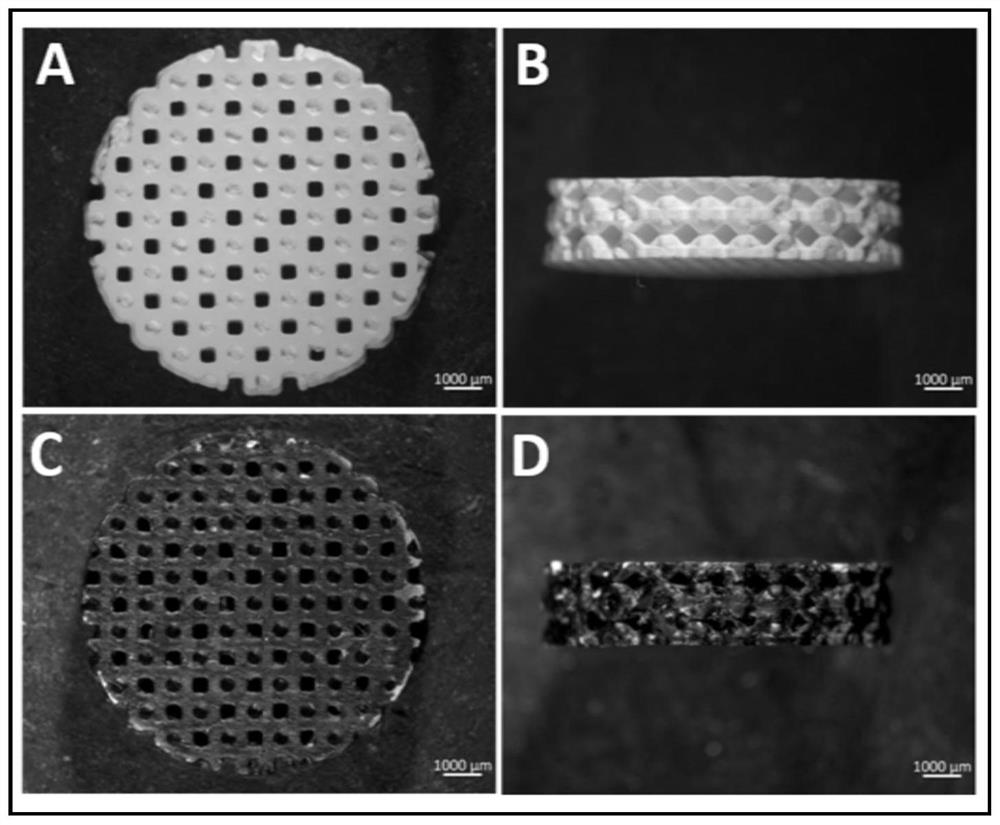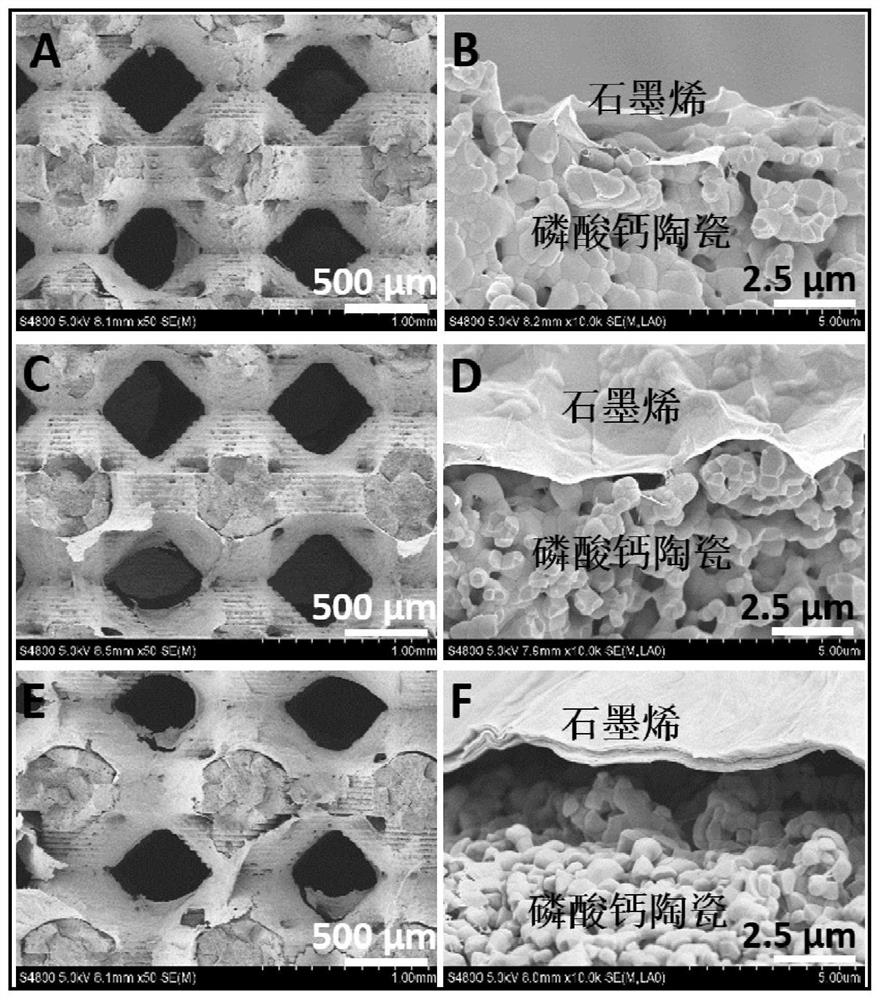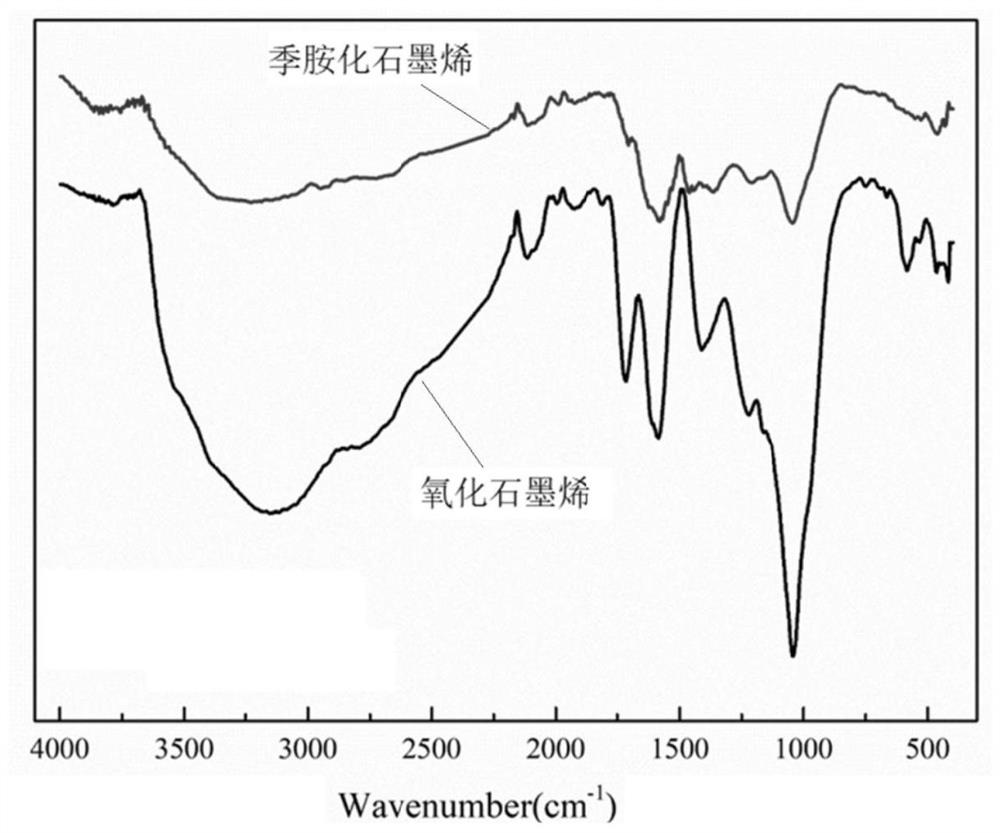Graphene/calcium phosphate ceramic composite scaffold with antibacterial function and preparation method
A calcium phosphate ceramic and composite stent technology, applied in the field of biomedical materials, can solve problems such as insufficient antibacterial properties, and achieve the effects of simple operation, satisfying diverse needs and improving biological properties
- Summary
- Abstract
- Description
- Claims
- Application Information
AI Technical Summary
Problems solved by technology
Method used
Image
Examples
Embodiment 1
[0034] The present embodiment discloses the preparation method of the graphene / calcium phosphate ceramic composite stent of the present invention, specifically:
[0035] (1) Configure 0.1 mg / ml graphene solution, and immerse porous biphasic calcium phosphate ceramics (mass ratio HA:β-TCP=3:7, porosity 62%) in the graphene solution;
[0036] (2) Transfer the graphene solution containing porous calcium phosphate ceramics into a suction filter bottle, under the condition of relative vacuum degree of -0.08MPa, vacuum perfusion for 10min, take out the ceramics, dry at 60°C, and continue to put graphene after drying The graphene / calcium phosphate ceramic composite scaffold can be obtained by vacuum perfusion in the solution, drying, and repeated three times.
[0037] The stereomicrograph of the graphene / calcium phosphate ceramic composite scaffold prepared in this example is attached figure 1 (C-D), with attached figure 1 Compared with the unsupported calcium phosphate ceramic sca...
Embodiment 2
[0039] The present embodiment discloses the preparation method of the graphene / calcium phosphate ceramic composite stent of the present invention, specifically:
[0040] (1) Configure 1.0 mg / ml graphene oxide solution, and immerse porous hydroxyapatite ceramics (porosity 70%) in the graphene oxide solution;
[0041] (2) transfer the graphene oxide solution containing porous hydroxyapatite ceramics into a suction filter bottle, under the condition of relative vacuum degree-0.04MPa, vacuum perfusion for 10min, take out the ceramics, carry out freeze drying, and continue to put graphite oxide after drying The graphene / calcium phosphate ceramic composite scaffold can be obtained by vacuum perfusion in the graphene solution and freeze-drying.
[0042] The microstructure of the graphene / calcium phosphate ceramic composite scaffold prepared in this example is as follows figure 2 As shown in (A-B), it can be found that there is a graphene thin layer on the ceramic surface with a thi...
Embodiment 3
[0044] The present embodiment discloses the preparation method of the graphene / calcium phosphate ceramic composite stent of the present invention, specifically:
[0045](1) Configure a 10 mg / ml reduced graphene oxide solution, and immerse the porous tricalcium phosphate ceramic (porosity 42%) in the reduced graphene oxide solution;
[0046] (2) transfer the reduced graphene oxide solution containing porous tricalcium phosphate ceramics into the suction filter bottle, under the condition of relative vacuum degree of -0.1MPa, vacuum perfusion for 30min, take out the ceramics, carry out freeze drying, and continue to put in reduction after drying The graphene / calcium phosphate ceramic composite scaffold can be obtained by vacuum perfusion in the graphene oxide solution and freeze-drying.
PUM
| Property | Measurement | Unit |
|---|---|---|
| thickness | aaaaa | aaaaa |
| thickness | aaaaa | aaaaa |
| thickness | aaaaa | aaaaa |
Abstract
Description
Claims
Application Information
 Login to View More
Login to View More - R&D
- Intellectual Property
- Life Sciences
- Materials
- Tech Scout
- Unparalleled Data Quality
- Higher Quality Content
- 60% Fewer Hallucinations
Browse by: Latest US Patents, China's latest patents, Technical Efficacy Thesaurus, Application Domain, Technology Topic, Popular Technical Reports.
© 2025 PatSnap. All rights reserved.Legal|Privacy policy|Modern Slavery Act Transparency Statement|Sitemap|About US| Contact US: help@patsnap.com



